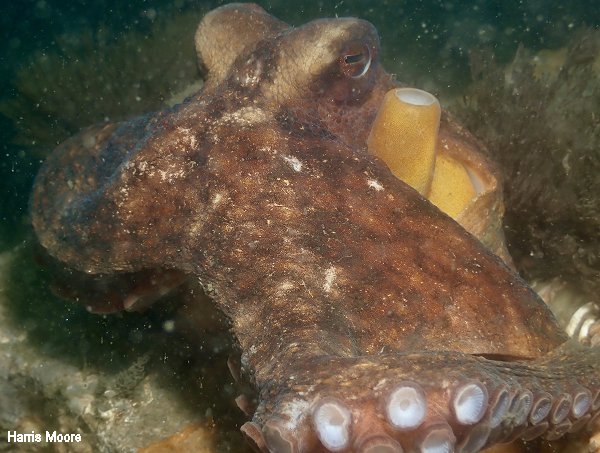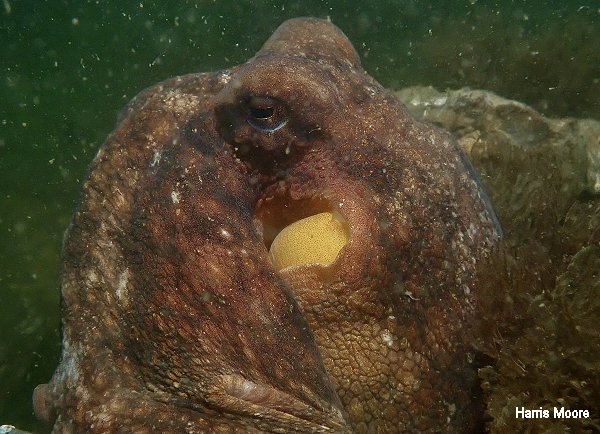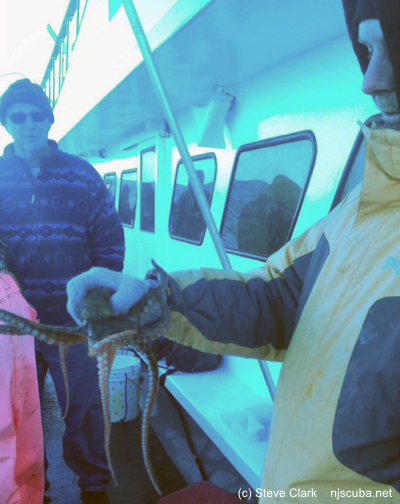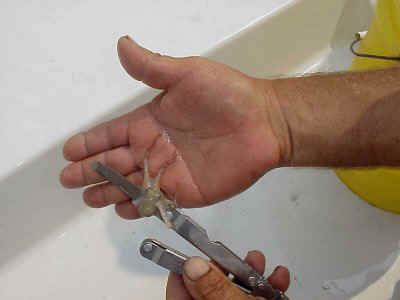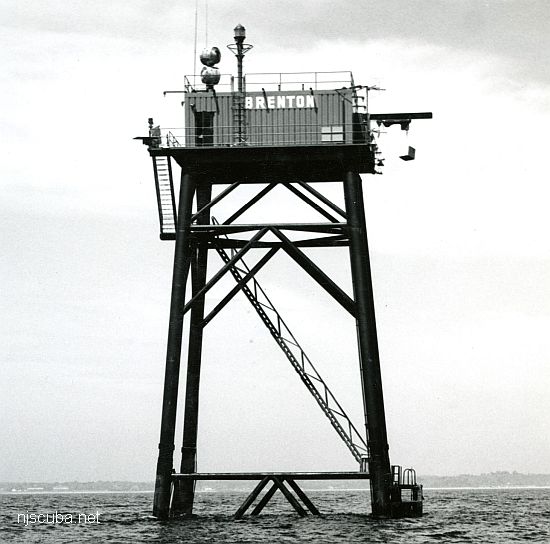Octopus
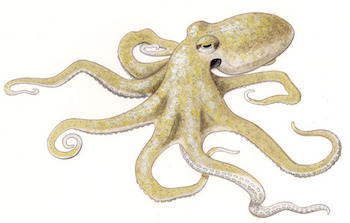
Octopus vulgaris
Size: see below
Habitat: rocks and coral reefs, all depths
Notes:
The Common Octopus is the most studied of all octopus species. Its natural range extends from the Mediterranean Sea and the southern coast of England to at least Senegal in Africa, as well as the Azores, Canary Islands, and Cape Verde Islands. In the western Atlantic, it ranges from Texas and Florida to New England, although uncommon in colder northern waters. Typical habitat is rocks and coral reefs. Young are planktonic, and total lifespan is only 12-18 months.
O. vulgaris grows to 25 cm in mantle length with arms up to 1 m long. They can weigh up to 20 pounds, although they are usually much smaller. O. vulgaris is caught by bottom trawls on a huge scale off the northwestern coast of Africa. More than 20,000 tons are harvested annually.
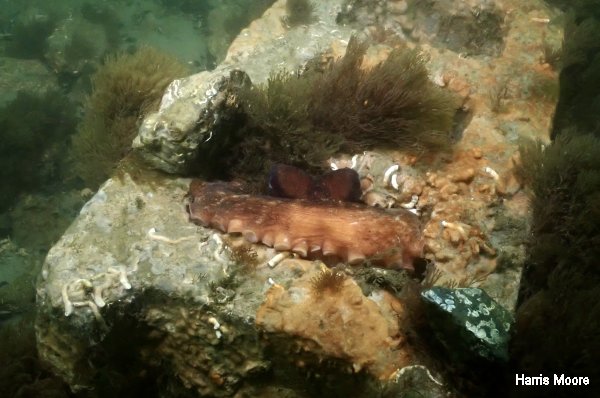
In New York City!
The Common Octopus hunts at dusk. Crabs, lobsters, and bivalve mollusks are preferred, although the octopus will eat almost anything it can catch. It is able to change color to blend in with its surroundings and is able to jump upon any unwary prey that strays across its path. The prey is paralyzed by a nerve poison, which the octopus secretes, and the octopus is able to grasp its prey using its powerful tentacles with their two rows of suckers. If the victim is a shelled mollusk, the octopus uses its beak to punch a hole in the shell before sucking out the fleshy contents.
Training experiments have shown that the Common Octopus can distinguish the brightness, size, shape, and horizontal or vertical orientation of objects. They are intelligent enough to learn how to unscrew a jar and are known to raid lobster traps. O. vulgaris is the only non-vertebrate animal protected by the Animals ( Scientific Procedures) Act 1986 in the UK; they were included due to their high intelligence. Octopuses are venomous, and can and will bite with a sharp hard beak, so handle with care.
The illustrations here are just examples, as this creature can change color, pattern, reflectivity and polarization, texture, and shape at will to blend in with its surroundings. Most cephalopods are colorblind, although sensitive to polarization. Apparently, the skin itself has receptors that do the color-matching. The entire nervous system is much more distributed than ours - the arms are semi-autonomous, the central brain controls them in an overall way, with little sensory feedback. It has been shown that a blindfolded octopus cannot control its arms.
I have seen authoritative references that state that there are no octopus in the Mid-Atlantic. That is obviously wrong, although they are uncommon. My guess is, like many things, they come up in the Gulf Stream accidentally as planktonic larvae. Octopuses generally die after breeding, the much larger female usually makes a last meal of her mate, then starves to death guarding the brood. But they probably don't find mates around here, and so could live longer than normal lives, if they are lucky and make it over the winter.
